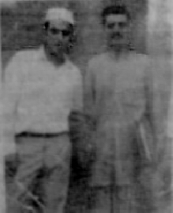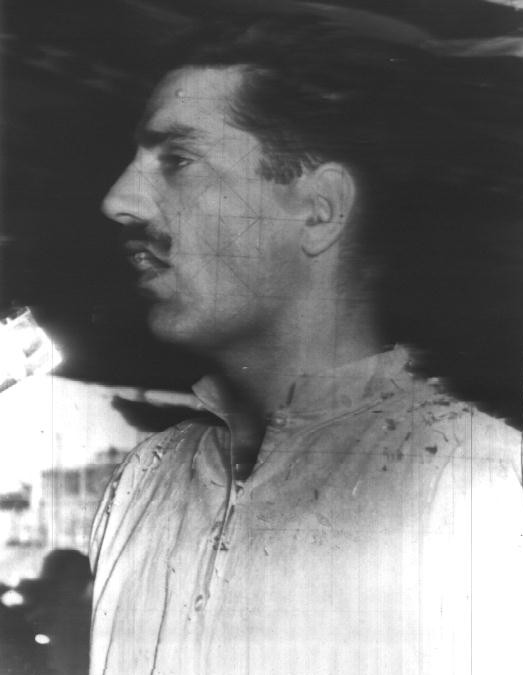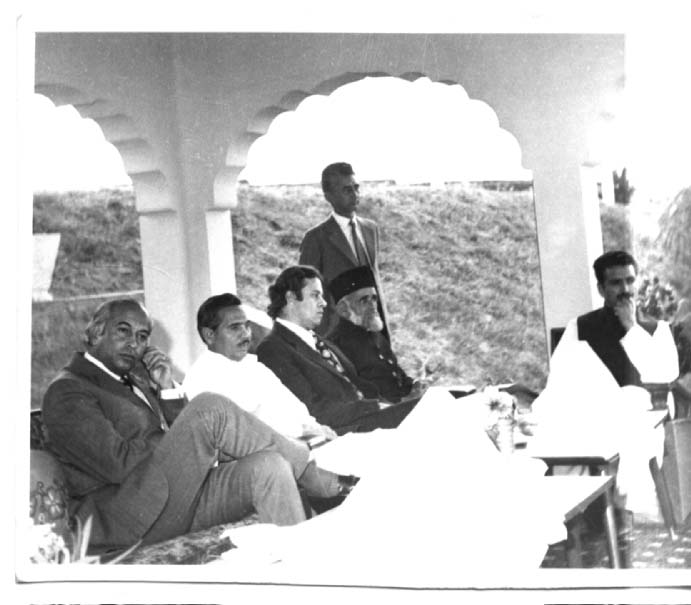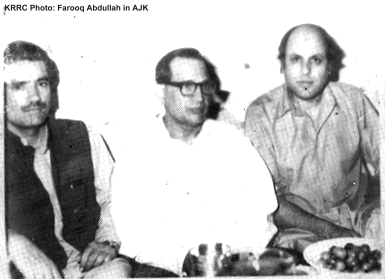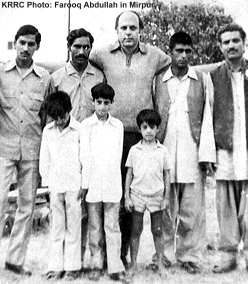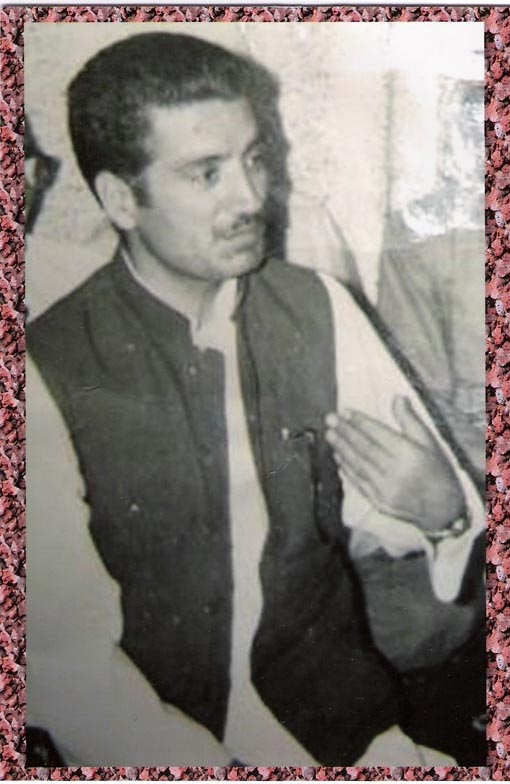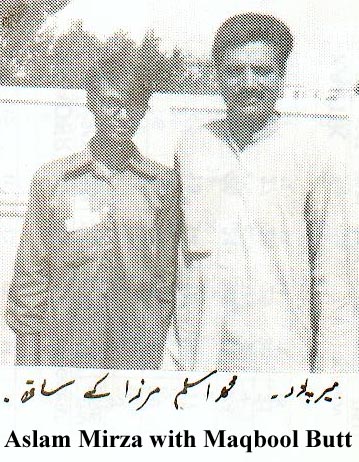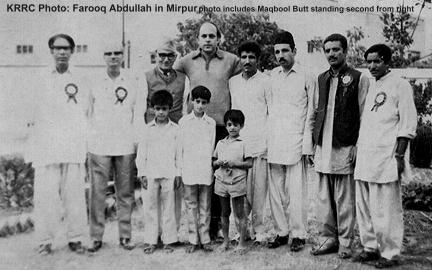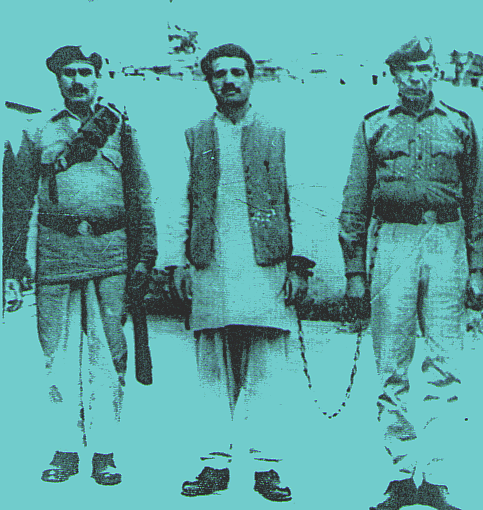
Twenty
two years on, since Kashmir’s first dreamer for an independent Kashmir
was sent to the gallows, his dream, his prophecy and his legacy lives
on, comments
While the political scene on both side of Kashmir changed dramatically
after that fateful February day in 1984 - when Kashmir’s little known
revolutionary was hanged in India, his hanging changed the fate and
fortunes of Kashmir. That momentous change which evolved into an armed
revolution has meant that the issue of Kashmir is not going to be
brushed under the carpet until his
mission is complete. He is now known as the Shaheed-e-Azam, ‘father
of the nation’. He has become an icon for countless political groups
both within and outside the vale of Kashmir.
11 February is being commemorated as Maqbool
Bhat’s 22nd death anniversary. On this day the scene was set to make a
modern day legend for Kashmir. On this day Kashmiris remember their
hero with honors and pride. Kashmiri nationalist groups, on both sides
of the dreaded line of control and all over the world, remember him
well but his adversaries who had hoped that he would be forgotten with
the passage of time wish their nightmare was over. Born after his
death, young men of age 22 who have grown up with the only undisputed
name in Kashmir’s turbulent history are not likely to forget his dream
and his mission. That name will live on for centuries to come.
It
was well after his hanging in February 1984 that politically
disillusioned and desperately dispassionate young men began to walk
down the never ending road to sacrifices. That emotionally charged and
compassionately fuelled armed conflict, which later became symbol of
liberty for JKLF and was referred to by Indians as ‘fanaticism’ - of
the kind never witnessed in the recorded history of Kashmir – was in
fact Maqbool Bhat’s path for liberation of his homeland. He is thus
called the real architect of that innovative and dangerous dimension to
the conflict – the armed revolution. Kashmiris call it a freedom fight. The freedom fighters of Kashmir have gone on to make new history. Centuries of injustices, decades of political subterfuge and years of incarceration finally reached saturation point. One martyr proved enough for Kashmir to set alight its unique history and an entire era of peaceful struggle into violent uprising that continues to haunt both New Delhi and Islamabad with dangerous connotations for the entire region.
Dozens of books, newspaper articles and research documents have been written on the subject seeking to establish the root cause of change in Kashmiri ethos. Every year on this day, we are reminded of the root cause and the reasons. The reason lies in an obscure grave in New Delhi’s back yard – the Tihar Jail, and lives in Kashmiri hearts.
He will remain a symbol of real strength and mark of respect in a dynamically changing but forcibly divided Kashmir. He was controversial in his time. He laid down his life in controversy but 22 years are a convincing account of the fact that his words should have been listened to more carefully with due attention. Those who labeled him as an enemy agent in Pakistan and those in India who regarded him as a dreaded terrorist with a mission from Pakistan now hang their head in shame.
At the time, in Kashmir, very few knew the truth about him. After his death, everyone (both in India and Pakistan as well as in Kashmir) wanted to know the truth. The truth, which had long become a casualty in the Kashmir saga in terms of India-Pakistan politics of deceit and war of words over who should rule his homeland, is still a rare commodity. Both the governments spend millions to simply fund those who play a role in disguising the truth to the benefit of one or the other. Truth is fiercely suppressed in Kashmir as ever.
Is India really so much frightened of the truth that they refuse to handover his mortal remains after 22 years of his death? What then is the explanation for this refusal and why desecrate his grave? Why then the most liberal and unorthodox writers of India have not set out to discover the truth as yet? Many Indians who have taken the trouble to write on the issue of Kashmir post-1990 have conveniently ignored the entire chapter except for passing references to Maqbool Bhat – with the exception of a couple of rediff.com stories.
The valley based newspapers (and some in Rawalpindi - circulated in Azad Kashmir) have been publishing special numbers on his death anniversary but other popular papers in Jammu-Kashmir and in India and Pakistan are yet to come to terms with the fact that this was an extraordinary man who had a vision for the future of Kashmir.
His ideas clearly clashed with the official view regarding the future of Jammu-Kashmir. It is not surprising that attempts have been made to undermine his image and popularity within the official circles. He wanted independence. He saw independence for Jammu-Kashmir as the only solution.
The fact that he consciously chose to lead his political life on a collision course with the establishment of the day which consequently brought him closer to death is a testimony of his integrity that makes him stand above the rest of the martyrs of Kashmir.
He is still buried in Tihar jail but continues to command his people in the streets of Srinagar to Sopore, from Muzafarbad to Mirpur. He has achieved after his death what he could not achieve during his life but the banner waving and placard carriers of Kashmir’s younger generations need to comprehend his message and unravel his approach against today’s intriguing complexities.
He is likely to continue to command respect and prestige in the ranks of Kashmiri freedom fighters and independence campaigners for many years to come but the JKLF and other Kashmiri nationalist groups, which espouse to follow in his name have got to put up a united front against the diversion of road maps, increasingly paralyzing peace formulae and hegemonistic designs to divide and rule Jammu-Kashmir for ever.
(The writer is a university lecturer and a former General Secretary of the JKLF in UK and can be reached by email \n This email address is being protected from spambots. You need JavaScript enabled to view it. )


